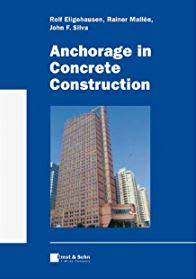I have a connection for a flood gate that needs to be attached to a concrete pillar.
Logically - it seems that the connection needs to be further away from the concrete edge to avoid cracking, than that you would calculate if it was a rebar and nominal distance.
Therefore, how do you calculate the distance from the column edge?
Logically - it seems that the connection needs to be further away from the concrete edge to avoid cracking, than that you would calculate if it was a rebar and nominal distance.
Therefore, how do you calculate the distance from the column edge?

